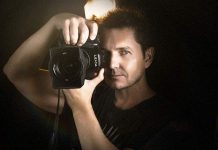Few people have shaved their head, hung from under a fast-moving truck and been catapulted through the air all in the name of work. But then not many people are as tough and determined as stuntwoman Dayna Grant. She has worked as a double for A-list actors including Charlize Theron and Tilda Swinton during her thrilling 20-year career, but to the easy-going Kiwi, it’s all in a day’s work.
Like the actors they’re doubling for, stunt artists also have to get into character during a shoot. For the action film Mad Max: Fury Road, Grant spent nine months in the Namibian desert as Oscar-winning Theron’s double. “I lived and breathed that film,” she says. “We became the characters. I had to shave my head. Everyday we were pumped into our characters. The whole film was a stunt from start to end – I was flying, running, sliding under a moving truck, hanging out the side of a truck door.”
Stunting isn’t just about jumping out of buildings and fighting scenes, though. “Our job is to train the actor,” says Grant. “In some jobs we train with the actor every day. We could be in the gym with them to make sure they have the right body type for the film. We’re with them the whole time, and any time they have downtime we are training ourselves to make sure we’re fit for the scenes.
“In [fantasy adventure film] Hercules, I was driving chariots and doing archery, so we have to practise whatever skill is in the film. You get there three months before filming starts and have full on training for 12-hours a day. You’re rehearsing all the time.”
Grant fell into the world of stunting when she was 18 when some male stunt friends asked her to audition to be a stuntwoman in cult hit TV show Xena: Warrior Princess, which was shot in her native New Zealand. Although a keen gymnast and horse rider, Grant admits she knew nothing about the profession and didn’t expect to get the job. But they liked her and she started the next day. “I was thrown into it and it was pretty full on,” she says. “I was fighting, stunt riding and catapulting through the air.”


























